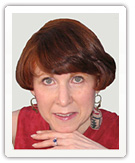e-Tips
Workplace Generational-Related Trend Forecast - 2010
As a congenital trendwatcher, I have made it an annual rite to review and report and give my riff on the annual Herman Trend Alert (a futurist-oriented firm). Of the 11 trends the Herman Alert selected, I am highlighting below four as most relevant to my readers. I will also elaborate on each of the four separately on my blog, www.nextgeneration-nextdestination.com.
- The forecast that I hope the most becomes reality, the sooner the better because it is vital, is Increasing Attention to Succession Planning and its sidekick “succession preparation.” The longer firms put off serious preparation for the next generation to step into the big Boomer shoes the greater the danger. As huge numbers of Boomers near the exit in their current workplace (not necessarily out of the workforce as such), the more behind the eight-ball and the less competitive firms will be as the economy picks up and competitors’ innovation accelerates. The current breather many organizations have allowed themselves during the recession will leave them gasping for air. Succession planning and preparation is needed at all times. Anyone whose expertise and contacts will be missed can cause a serious business disruption and loss of clients if quality transitions are not in the works. Remember, talented personnel can leave for numerous reasons besides retirement.
- The counterpart to succession preparation as we experience an aging workplace is another forecast: Employers Will Accommodate Older Workers Like Never Before. Employers need to get the work done; many workers, including successful professionals and executives, want to keep going whether or not they really need the additional money to live comfortably. The Herman Group suggests that employers will see the benefit of avoiding recruiter fees and expensive contract help by bringing back their retired personnel on part-time, seasonal or temporary bases, even if the older workers can dictate their own terms. I can envision organizations hiring their former personnel with knowledge no one else would have to the same degree or dissuading them from going elsewhere for the typical “busy seasons” or employing them for training and coaching the next generation to continue top service to clients.
- The concept behind the buzzword of the last several years will rise in significance. Focus on “Engagement” Will Replace the Focus on Retention. That’s because we know that just having bodies in place is not the answer; the goal is increased productivity, which comes from sustained engagement and leads to greater profitability. Herman expects to see a new functional title: Directors of Employee Engagement morphing from Directors of Retention. It may be a new title, but my guess it will incorporate or collaborate with the professional development and employee benefits functions. Firms will increasingly recognize that to raise the quality of the client experience they have to improve the working experience of staff, professional personnel and managers.
- A component of the engagement package is reward. So organizations will adopt Innovative Ideas to Reward Their Valued Workers. Employers will focus on recognition and non-financial rewards that will provide the psychic rewards that professionals and other top talent need to keep them going and loyal. And firms will learn to go to the source of most welcomed ideas –workers suggesting what rewards other than money are most appreciated. I bet that one of them, especially for Gen Y, is employers listening to their ideas and taking their suggestions seriously – so this one is a two-fer!
What do you think? Can you imagine these forecasts taking hold and helping firms to emerge from the recession stronger, retaining and capitalizing on their human assets while minimizing costs?
Phyllis
© Phyllis Weiss Haserot, 2010. All rights reserved.
* The generational chronology for easy reference: Generations are defined by the similar formative influences – social, cultural, political, economic – that existed as the individuals of particular birth cohorts were growing up. Given that premise, the age breakdowns for each of the four generations currently in the workplace are approximately:
Traditionalists: born 1925-1942
Baby Boomers: born 1943-1962
Generation X: born 1963-1978
Generation Y/Millennials: born 1979-1998

